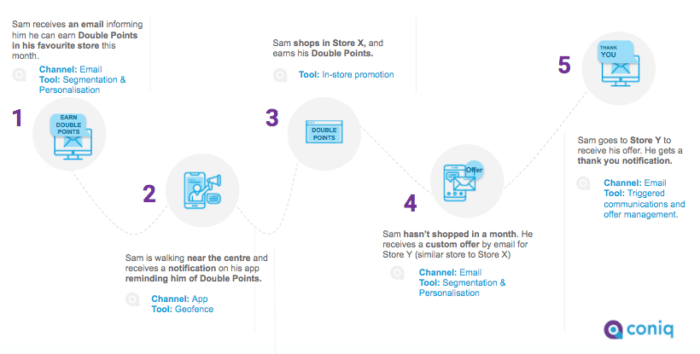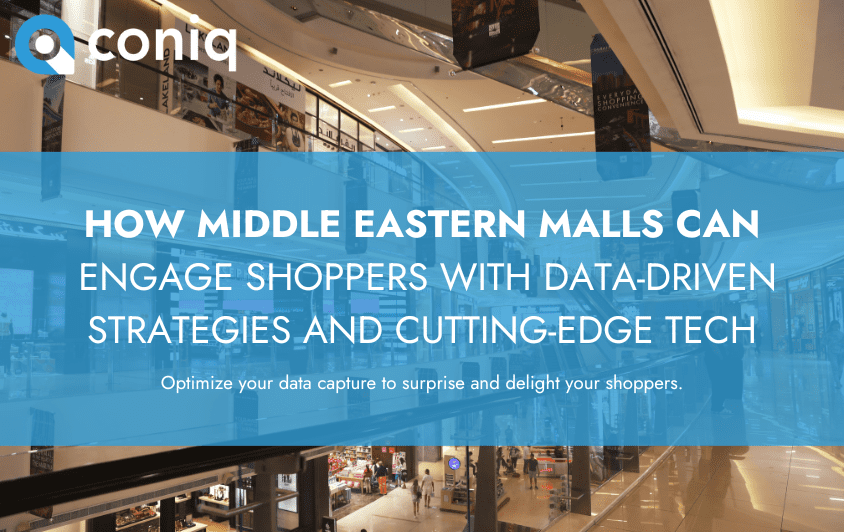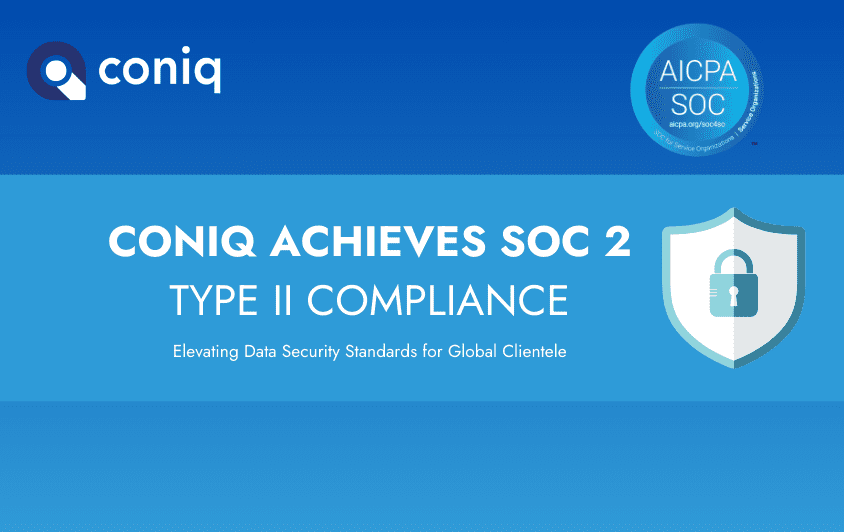Nowadays, customers expect retail destinations to know who they are, what they want, when, and how they want it without repeating or clarifying their needs.
In this current competitive climate, if you lack insight into your customers or cannot use it in a way that shows customers that you know them on a personal level. You run the risk of losing them and losing sales. One way to avoid this is through customer journey mapping.
Customer journey mapping is key in designing a personalized loyalty and engagement program to transform your traditional shopping center into a retail destination and to ensure you extend your relationship with customers before and after their visit.
What is customer journey mapping?
“Customer journeys” reflect all touchpoints experienced by your customers as they interact with your shopping destination. Mapping customer journeys involves combining multiple data sources to analyze existing customer journeys and designing the ideal buyer journeys to drive customer satisfaction, loyalty, and revenue.
STEP 1: FOCUS ON A SPECIFIC CUSTOMER JOURNEY
Start by focusing on the customer journey that will provide the most value. Consider the business goals, review your existing customer lifecycle, and identify the best opportunity to further your objectives without too many risks.
For example, suppose your main objective is to increase customer spend, but analysis shows that your customer frequency has declined over the last two years. In that case, you need to focus on creating a customer journey that encourages an increase in return visits.
Specific channels should not define the journey, which may explain why 55% of shoppers still say their retail experience is “disjointed.” When interacting with your shopping center and retailers, customers naturally cross multiple marketing channels. You must take a holistic and omnichannel approach to customer journeys to understand why customers make shopping decisions.
STEP 2: DEFINE YOUR STRATEGY
How will you achieve the objectives you have set out for your journey? Gather the necessary insight to build a strategy and identify the tools and channels you can use to implement your plans. Then define the resources needed for this journey.
For example, if your main goal is to increase the frequency of visits, you should look at three success factors and ask yourself these questions:
-
– Look into your customer data
-
- How is each customer persona behaving?
- Who could you push towards that extra visit?
- What has driven them to visit more? Focus first on which small changes in behavior would generate the most value.
-
-
– Select your tools & channels
-
- What tactics can you use to drive those customer personas to visit?
- Could you use email and website communication to promote offers and rewards that guide customers back into your shopper mall?
- Could you use a mobile app with geofencing to capture your member’s attention at the right time? It may be a simple case of tailoring a message to one specific audience, which will effectively drive a desired behavior.
-
-
– Check available resources
-
- What do you need to implement your tactics?
- Does your tech stack give you a clear vision of all customer touchpoints?
- Can you break down your database into different target audiences for communications?
- Are enough brands and retailers involved and providing incentives? These fundamental abilities can supercharge the effectiveness of your marketing team’s actions.
-
STEP 3: MAP OUT THE CUSTOMER JOURNEY
Translate and organize your strategy into key touchpoints across a customer journey. To do so, select a buyer persona and define the various engagement steps and how you will interact with them at each touchpoint.
Base the touchpoints on the following:
- 1. That persona’s characteristics
- 2. Opportunities the customer persona present
- 3. The pains they may encounter
- 4. Channels the shoppers use
- 5. Hook the customer are the most likely to respond to
Then considering these factors should enable you to engage your persona in the right place, at the right time, and in the right way.
Continuing on our frequency example where in the last step, we identified an opportunity with your high-spend/low-frequency persona. Now design a buyer journey; considering the opportunity this persona presents, the marketing channels must correspond to this buyer persona and select the tactics that will resonate with them. This is an example of what that journey may look like.

STEP 4: REVIEW, TEST AND IMPROVE
Once you map your customer journey out, review it to identify potential gaps. Then finalize the journey to test its effectiveness by activating it for a limited number of customers within your target segment. Analyze how it impacts the customer segment and compare results for that group to the rest of the customer journey. Using control groups is an effective way of testing your journey.
Your digital marketing tools will capture the results of the changes put in place, allowing you to analyze the ROI of your improved customer journeys directly. You can identify if your actions have successfully generated the desired behaviors. I.E. The behavior shifts that will ultimately contribute to your engagement goals.
In our frequency example, the shift in behavior is getting customers to make one extra visit.
If nothing changes, update and refine, and re-test! To try out new ideas, split or a/b tests can be implemented to see if people exposed to a new customer journey or initiative respond favorably.
The right customer journey will help you provide an excellent customer experience while driving your business goals. Customer engagement and loyalty data are vital to your success, allowing you to make informed decisions.





